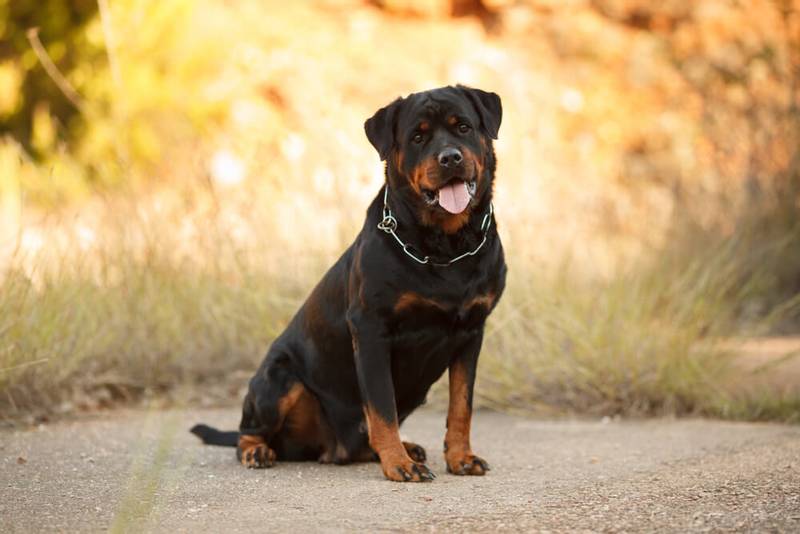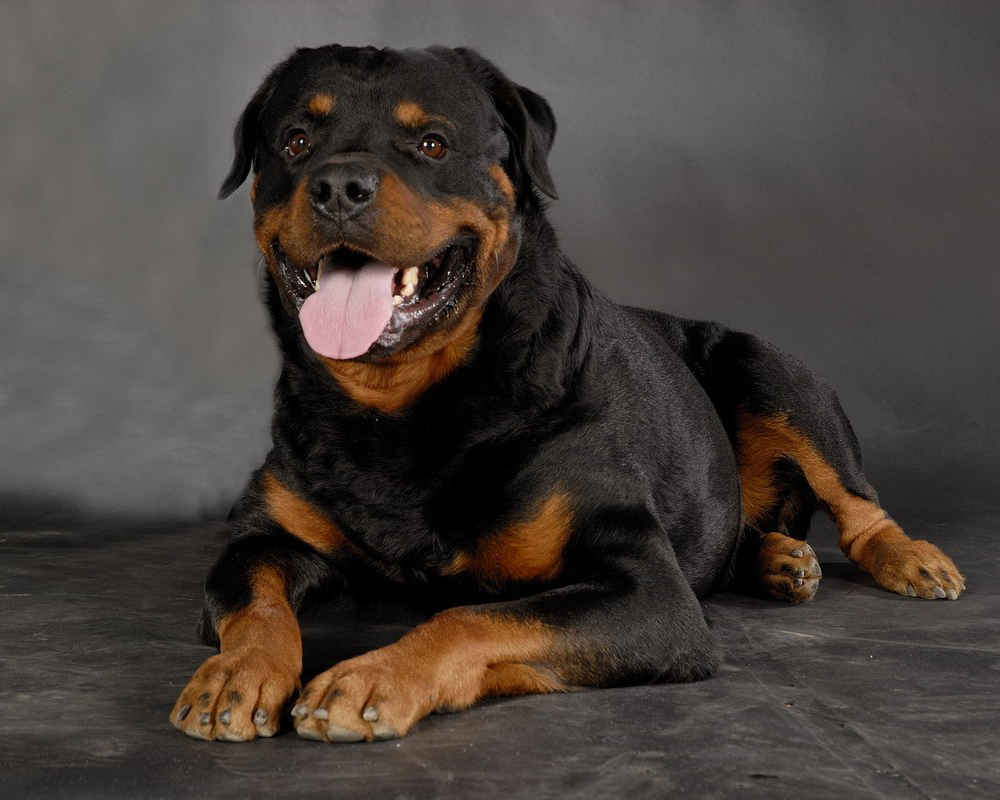Rottweilers have a number of congenital and hereditary diseases. Like many large dogs, they are prone to hip and elbow dysplasia. They have hereditary spinal muscular dystrophy, which leads to atrophy of the muscles of the back, weakness of the hind limbs, and impaired gait. Congenital deafness, impaired coordination, muscle tremors, paresis of the limbs can be caused by encephalomyopathy and neuro-axonal atrophy of Rottweilers. Less common in Rottweilers are hereditary eye diseases, in particular, retinal atrophy. The breed is prone to inversion of the eyelids.
Acquired diseases
Puppies can develop forelimb deformity caused by feeding disorders, excess weight, injuries, and improper maintenance of the dog. Rottweiler puppies are prone to viral diseases and juvenile demodicosis at an early age.

In adult dogs, skin diseases are more common – dermatitis, eczema, otitis media; indigestion, acute dilatation of the stomach, arthritis and arthrosis. Rottweilers are prone to kidney stones. Older dogs are prone to the development of tumors, cardiovascular diseases. Uncastrated males may suffer from chronic prostatitis. Unsterilized females are prone to diseases of the reproductive system.
How to choose a puppy
When buying a Rottweiler, the first thing to think about is the class of the animal: whether the dog will participate in exhibitions and further breeding, or the future owner just needs a pet. Before you buy a puppy, it is recommended to get acquainted with the characteristics of the breed, read reviews, talk with the owners of Rottweilers and, with their consent, with the dog.
The next step is to find reliable breeders. It is recommended to invite a veterinarian to examine the puppy before buying. You also need to ask the breeder to show the puppy’s parents. Read the sales contract carefully.
A healthy puppy is slightly clumsy, has an average fatness, is active, interested in the outside world, with a smooth shiny coat, no discharge from the eyes or nose. The area under the tail should also be free of selections. The physique is symmetrical, the paws are without swelling.
After the purchase, it is recommended to take the puppy to the veterinary clinic for examination if it was not possible to invite a veterinarian.
How to keep Rottweiler dogs healthy
The average lifespan of a Rottweiler is 9-10 years, depending on the health of the dog, and they are prone to certain diseases that pet owners should be aware of. The best chance of avoiding Rottweiler health problems is to purchase a puppy from an ethical professional breeder who has the paperwork to show that the dogs they breed are free of genetic diseases.
Joint dysplasia is a disease that affects growing joints and tends Rottweilers to develop arthritis and joint problems early. Rottweilers are known to develop several dysplasias, including Rottweiler hip dysplasia, elbow dysplasia, and osteochondritis dissecans.
Aortic stenosis is a genetic condition where the aorta, the main artery that carries blood away from the heart to the rest of the body, is too narrow. Aortic stenosis can cause a heart murmur, weakness, and difficulty breathing. Affected dogs should not be bred. Moderate to severe cases of aortic stenosis are treated with medication and surgery.
Ectropion is a condition where the eyelid rolls outwards, causing irritation, dryness, and damage to the eyeball and conjunctiva (tissues surrounding the eye). Surgical treatment.
Entropion is a condition where the eyelid rolls inward, causing irritation to the eyeball from rubbing the eyelashes on the surface. In severe cases, entropion can cause corneal ulcers. Surgical treatment.
In Rottweilers, the ACL at the knee is known to rupture and cause severe hind limb lameness. The exact cause is unknown, but it is believed that genetics, lethargy are linked, and obesity plays a role. A torn ACL creates instability in the joint and predisposes the joint to early onset osteoarthritis, pain, and loss of mobility. Surgical treatment is carried out, which is recommended at an early age in order to avoid the development of arthrosis.
Characteristics of the Rottweiler

The Rottweiler has become a popular pet known for its formidable size. For reference, the average weight of a Rottweiler can reach over 60 kg!
- Breed group: Working
- Height: males 61-68 cm; females 56-63 cm
- Weight: males 50 kg females 42 kg
- Lifespan: 9-10 years
- Wool: rough, medium length
- Colours: Black with rust, mahogany or tan imprints
The history of the Rottweiler began during the expansion of the Roman Empire from a breed of mastiff-type dogs. The Roman military used these dogs to accompany their legions as they marched through Europe, the Middle East, and North Africa. Dogs guarded the herds – the food source of the soldiers – and ensured their efficient movement.
Centuries after the collapse of the Roman Empire, dogs began to work in Rottweil, a southwestern German city that became an important trading center. The dogs drove and protected the cattle, moving from pasture to market, and earned the name “Rottweiler Metzgerhund” or “Rottweil Butcher’s Dog”.

